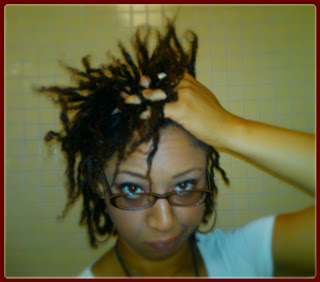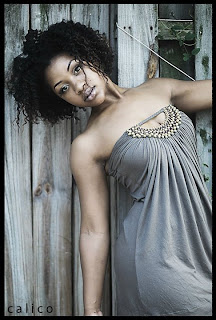India Arie may say that she is not her hair, but I have no problem with admitting the contrary: I AM MY HAIR. If you follow me on Twitter, you would know that natural hair is not just a fad for me or something to make me look pretty. From the day I cut my perm off 12 years ago, natural hair has always been a philosophy and a statement for me. A statement of my refusal to accept European standards of beauty, a statement that there was nothing wrong with my hair the texture the Most High created it, a statement that I would not yield to the pressure of society and my peers telling me how I ought to look. I went natural before it was the “thing” to do. I did not have any support groups, or websites, or blogs, all I had was a little book by Lonnice Brittenum Bonner called “Good Hair: For Colored Girls Who Considered Weaves When the Chemicals Became Too Ruff” and a lot of youthful determination. My hair expresses who I am and what I represent, and the way I choose to express that is through locs. I may change up my clothing style, from business suits to hippie attire to sexy vixen, but the one thing that remains constant that conveys to the world who I am underneath all of that is my hair. I recently interviewed for a job and the interviewer expressed concerns to my friend who referred me that I was too reserved. The thing my friend pointed out to him to show him otherwise? My locs. Though I was in a suit, had my locs nicely done up in curls, my hair still conveyed that I am not your average woman, I do not follow the mainstream, I am my own person.
I went back to locs because what was NOT me was the loose natural, which lasted only a month. I have absolutely nothing against loose natural hair and I love it and embrace it (on others) just as I do locs. I just feel that I looked better with locs, that they are more “me.” I did not immediately go back to locs after I cut the first set, even though I had plenty enough hair to do so at any time. But all that was part of my sacrifice and penance. I needed to wait until I was ready to loc again, until I felt that I had purged the residual negative energy from my hair and from my life. I did not want to start over with a new set of locs and harness any of the negativity that I was trying to escape from. When I started my locs over, I wanted it to be a truly fresh start. I even went to a new loctician, a woman who was full of life and joy, and who unfortunately shortly thereafter had her life cut too short by a drunk driver. I took that as a sign that this loc journey was one that I had to do on my own, just as the change within myself could ultimately only be done by me. I had to choose not to repeat the mistakes of the past.
| Bantu knot braid-out |
 |
| Curled braid-out |
 |
| Flat twists & bun |
I really hope that people around me, and especially people I love, can see and believe these things as well. I have had some recognition and acknowledgment of the change from those who know me; even my ex-husband said he could see a definite change in me over the past year; he does not even know any of the background or events leading to or away from last fall’s purging and new beginnings, and we do not even speak or interact regularly. People say I look happier, I smile more, laugh more, that my joy radiates. Much of this comes from being more content in my relationship, but even that stems from my commitment and efforts to change and his help along the way. And though not everyone in my life may appreciate the true significance of my journey, looking back I have to be content with the fact that I did this for myself and everything else will take care of itself. Not everyone has chosen, or has been chosen, to come along this journey with me; I have definitely lost some friendships, abandoned some friendships, and scaled back other friendships. I can only go forward knowing in my heart and knowing that the Most High knows that I am a better person than I was in October 2009, and, like my locs, I will continue to grow, change and be better. There is no going back.























